| Saipan 1944:
Design Notes
By Mike Bennighof, Ph.D.
January 2025
 Panzer Grenadier: Saipan 1944 is the centerpiece for Panzer Grenadier’s coverage of the Pacific War; it’s the sole core game set in the theater and with its beautiful map and good selection of pieces, it’s a firm foundation for many expansions. Panzer Grenadier: Saipan 1944 is the centerpiece for Panzer Grenadier’s coverage of the Pacific War; it’s the sole core game set in the theater and with its beautiful map and good selection of pieces, it’s a firm foundation for many expansions.
It’s also a fine game in its own right, which I had firmly in mind when I set out to develop it again for the Playbook edition. The game’s 40 scenarios take place on the island of Saipan, during the American invasion in June and July, 1944. The Americans came ashore with two divisions of Marines, plus an Army infantry division that followed up their landings. The Japanese defended with an infantry division and an infantry brigade, but many of the troops, weapons and construction materials sent to Saipan were lost to American submarine attack (most of the troops were rescued, but without their weapons or even shoes).
The Japanese put up fierce resistance even so, and fought practically to the last man. This was the first encounter between American troops and Japanese civilians (Saipan had come under Japanese rule in 1914, and it had become an important center of sugar production). About two-thirds of the civilian population of 28,000 died during the battle, including at least 1,000 who leapt off cliffs rather than be taken prisoner. Only 931 military prisoners were taken, of a garrison numbering 31,629 Army and Navy personnel.
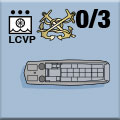 That makes for a scenario-rich environment; Saipan 1944, the game, could easily have twice as many scenarios (and I probably would have designed it that way, had I done it myself). Designer Jay Townsend chose 40 actions from across the battle, from the initial landings on the island’s south-west corner to the Japanese last stand at Saipan’s northern tip. That makes for a scenario-rich environment; Saipan 1944, the game, could easily have twice as many scenarios (and I probably would have designed it that way, had I done it myself). Designer Jay Townsend chose 40 actions from across the battle, from the initial landings on the island’s south-west corner to the Japanese last stand at Saipan’s northern tip.
Saipan is large for a Pacific island, but not really by any other measure. It could all just barely fit on a very large Panzer Grenadier-scale map, perhaps the size of a ping-pong table. I know this, because I thought about making such a game, before sanity took hold. And then Jay’s submission arrived, and I saw that it could be done without such insane measures.
 Saipan 1944 has four geomorphic maps, that you put together to form the battlefield for the scenario. Two of them have beaches running down one side; there’s not a lot of open water so most of these maps are usable in scenarios taking place fully on dry land. Much of the dry land on these maps, like most of Saipan in 1944, is given over to sugar cane fields. The other two maps have some pretty rough ground, with jungle-covered mountains befitting the center of the island. Saipan 1944 has four geomorphic maps, that you put together to form the battlefield for the scenario. Two of them have beaches running down one side; there’s not a lot of open water so most of these maps are usable in scenarios taking place fully on dry land. Much of the dry land on these maps, like most of Saipan in 1944, is given over to sugar cane fields. The other two maps have some pretty rough ground, with jungle-covered mountains befitting the center of the island.
That terrain is key to the Japanese defense. While the Japanese have tanks on Saipan, they aren’t very good. They have few anti-tank guns, and some immobile coast-defense guns that can make a mess out of any tank unlucky enough to wander in front of them. But mostly, they’re going to have to fight tanks with infantry, and that dense terrain is crucial to letting the Japanese foot soldiers get close enough to the American tanks to swarm them. What the Japanese do have is soaring morale and excellent leadership, both utterly necessary in this game system for infantry to assault enemy armor.
The Japanese player wields troops from two different services, the Imperial Army and the Navy’s Special Naval Landing Forces. The latter are also high-morale troops with good leaders, and limited support weapons. Beyond the troubles of transport, Japan simply did not have the industrial capacity to equip her troops as lavishly as did the United States.
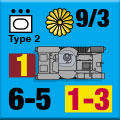 The U.S. Marines are the decided stepchild of the American armed forces, but even hand-me-down weaponry vastly outclasses what the Japanese can bring to the battlefield. The Marine Rifle platoons have been organized to maximize firepower, seen (correctly) as the best answer to Japanese bayonet charges. The new-style fire teams meant that each squad wielded three Browning Automatic Rifles, while plentiful machine guns and mortars gave heavier support at the company and battalion levels. The U.S. Marines are the decided stepchild of the American armed forces, but even hand-me-down weaponry vastly outclasses what the Japanese can bring to the battlefield. The Marine Rifle platoons have been organized to maximize firepower, seen (correctly) as the best answer to Japanese bayonet charges. The new-style fire teams meant that each squad wielded three Browning Automatic Rifles, while plentiful machine guns and mortars gave heavier support at the company and battalion levels.
Each of the two Marine divisions included a battalion of M4 Sherman tanks, with a company of M5 Stuart light tanks included. The Marines also deployed their Amtrac amphibious tractors on dry land as ungainly light tanks (the fire-support version) and armored personnel carriers (the transport version). The Japanese don’t usually have anti-tank weapons to make them pay for that decision, except when they do.
 And they had Satan on their side: two dozen M3 light tanks converted by Navy Seabees to carry a Canadian-made flamethrower in place of the 37mm main gun and manned by Marine crews. This would become the Marines’ favored weapon for taking on Japanese fortified positions; in early battles, the crews of man-portable flamethrowers had suffered a 92 percent casualty rate. The Satan tanks would be waddling bombs if things went wrong, but the Japanese were not overly-supplied with anti-tank guns. And they had Satan on their side: two dozen M3 light tanks converted by Navy Seabees to carry a Canadian-made flamethrower in place of the 37mm main gun and manned by Marine crews. This would become the Marines’ favored weapon for taking on Japanese fortified positions; in early battles, the crews of man-portable flamethrowers had suffered a 92 percent casualty rate. The Satan tanks would be waddling bombs if things went wrong, but the Japanese were not overly-supplied with anti-tank guns.
Marine firepower doesn’t end there. They bring mobile rocket launchers (with shoot-and-scoot capability) and, as befits the American way of war, plenty of artillery, mortars, and machine guns. And the Marines themselves are tough bastards, by now the veterans of multiple battles against the Japanese (or at least their cadre has such experience).
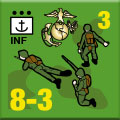 The U.S. Army brings the New York National Guard’s 27th “Empire” Infantry Division. Most of the division had combat experience gained in the Marshall Islands campaign, but the V Amphibious Corps commander, Marine Lt. Gen. Howlin’ Mad Smith, fired the Army division commander, Ralph Smith, for what he saw as the 27th Infantry Division’s poor performance on Saipan. That would become an inter-service political controversy, but the Army division did pick up the pace afterwards. The U.S. Army brings the New York National Guard’s 27th “Empire” Infantry Division. Most of the division had combat experience gained in the Marshall Islands campaign, but the V Amphibious Corps commander, Marine Lt. Gen. Howlin’ Mad Smith, fired the Army division commander, Ralph Smith, for what he saw as the 27th Infantry Division’s poor performance on Saipan. That would become an inter-service political controversy, but the Army division did pick up the pace afterwards.
What the game shows is that, perhaps, Howlin’ Mad really didn’t appreciate the Army division’s difficulties, as an Army review board found. The Army-centered scenarios force the Americans to attack into fearsome terrain, against well-prepared Japanese fortifications including bunkers built into mountainside caves.
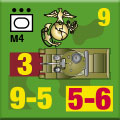 There are tank battles on Saipan: both the Marines and Army brought armor attached to their divisions, and the Japanese garrison had tanks as well (though many of those intended for Saipan did not survive the voyage). But mostly, it’s an intense infantry fight, between determined, high-morale forces. I designed the Panzer Grenadier game system for battles just like this, and Saipan 1944 shows it to best advantage. There are tank battles on Saipan: both the Marines and Army brought armor attached to their divisions, and the Japanese garrison had tanks as well (though many of those intended for Saipan did not survive the voyage). But mostly, it’s an intense infantry fight, between determined, high-morale forces. I designed the Panzer Grenadier game system for battles just like this, and Saipan 1944 shows it to best advantage.
Click here to order Saipan 1944 right now.
Please allow an extra four weeks for delivery.
Pacific Islands Package
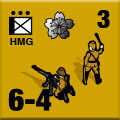 Saipan 1944 (Playbook edition) Saipan 1944 (Playbook edition)
Marianas 1944
Leyte 1944
Retail Price: $156.97
Package Price: $125
Gold Club Price: $100
You can order the Pacific Package right here.
Please allow an extra four weeks for delivery.
Add More Fun!
 
Marianas 1944
American Marines and soldiers battle the Japanese on Tinian and Guam in this expansion for Saipan 1944, with 30 new scenarios, 24 new die-cut, silky-smooth pieces and two new maps. $35.99
Click here to purchase Marianas 1944 right now.
Leyte 1944
Forty-six new scenarios for Saipan 1944 (you'll also need Marianas 1944 and, for just one scenario, Elsenborn Ridge) devoted to the American return to the Philippines: Japanese paratroopers, rocket-firing gunboats and more! Plus 88 new die-cut, silky-smooth playing pieces. $35.99
Click here to order Leyte 1944.
Sign up for our newsletter right here. Your info will never be sold or transferred; we'll just use it to update you on new games and new offers.
Mike Bennighof is president of Avalanche Press and holds a doctorate in history from Emory University. A Fulbright Scholar and NASA Journalist in Space finalist, he has published a great many books, games and articles on historical subjects; people are saying that some of them are actually good.
He lives in Birmingham, Alabama with his wife and three children. He misses his lizard-hunting Iron Dog, Leopold.
Daily Content includes no AI-generated content or third-party ads. We work hard to keep it that way, and that’s a lot of work. You can help us keep things that way with your gift through this link right here.
|
